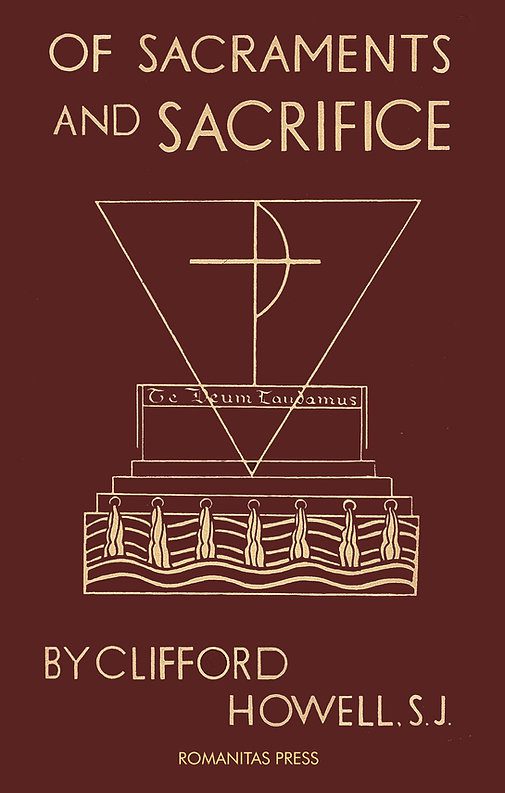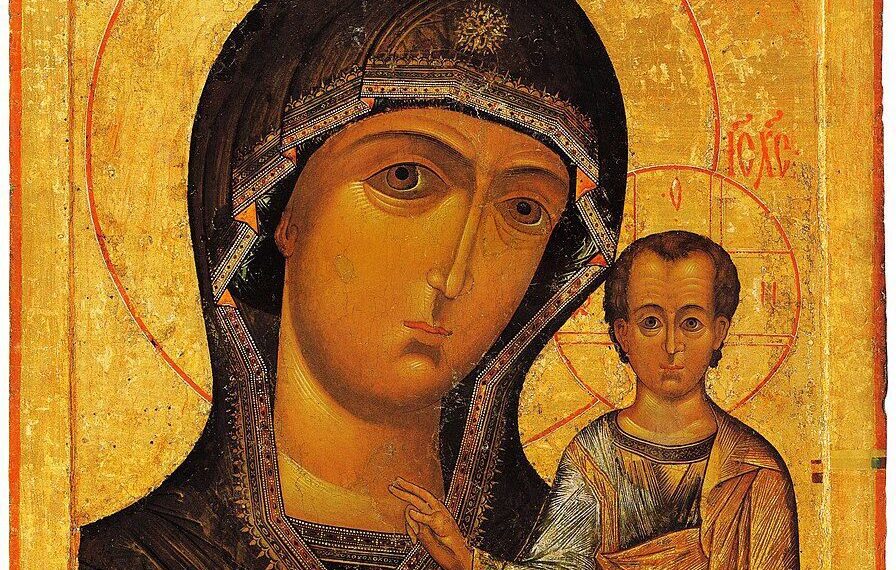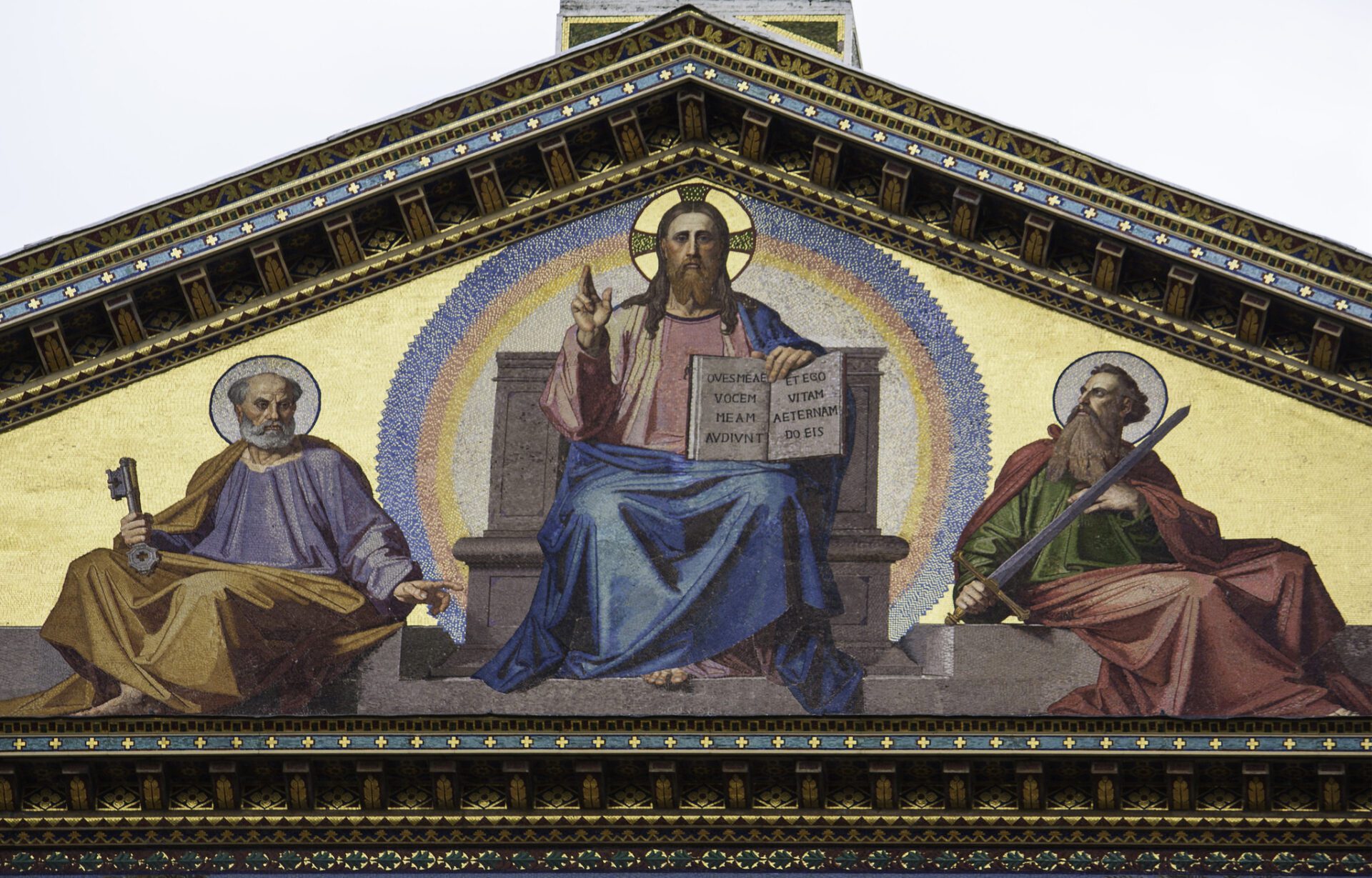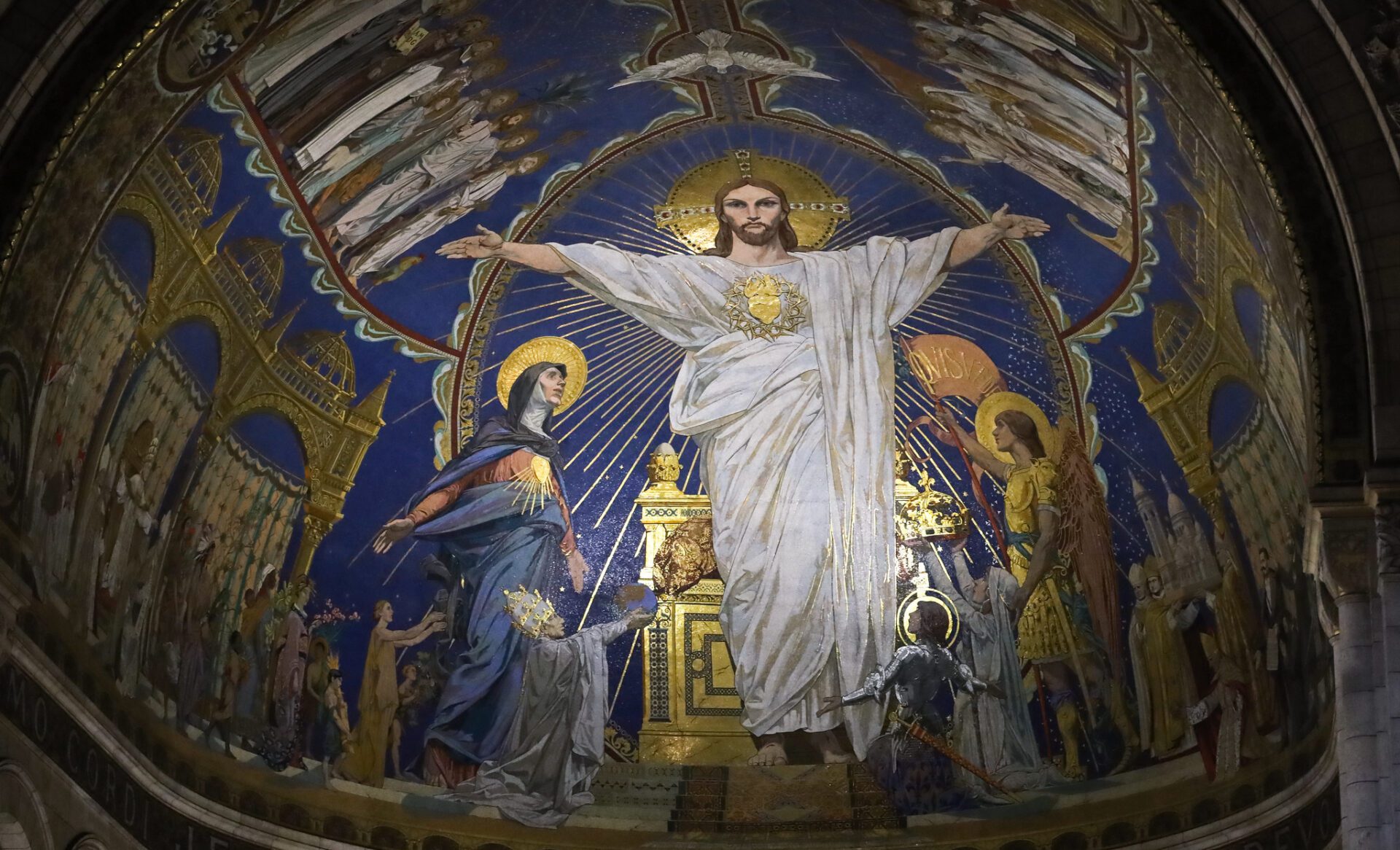


Debuting in 1952, this book by the English Jesuit Clifford Howell (1902-1981) originated as a series of articles in the journal Orate Fratres (renamed Worship in 1951) published by The Liturgical Press. Father Howell states in his preface that he set out to write an engaging introduction to the subject of liturgy for people with no liturgical background. We have here no technical theological treatise. Instead, Howell supplies the raw material needed to develop a “liturgical outlook,” a way of seeing the Catholic Faith as more than “just a list of obligations” but “something for which you will thank God continually, with joy and gladness in your heart” (10).
Written in an engaging and conversational style, the book is divided into two parts, each consisting of eight chapters. Part One (“Of Sacraments”) begins with a question one might expect from those—and they are legion—who equate religion with being nice: Why worship? Howell likens people who do not worship God, but who are morally upright on the whole, to “children who are pleasant with brothers and sisters and schoolmates, who…do all sorts of things which their father wants them to do. But they take no notice of their father.” Inversely, people who say their prayers and go to church but are unrepentant evildoers “are like children who talk to their father, praise him, thank him for all he has done, ‘take due notice of him’ in fact; and yet they don’t do what he wants” (5-6).
It is one thing to worship God from the fact that we are his creatures and are therefore duty bound to adore and obey him. But it is something else, much more wonderful, to exceed the powers of human nature and put into our praise, thanksgiving, and supplication all the power of God. Yet that is what characterizes the prayer of the Christian. What makes this kind of worship possible is participation in the “supernatural life,” meaning a type of life that belongs to a nature above (super) our human nature with its limitations, indeed a “sharing in God’s own life and powers” (17). Since God’s divine life transcends the three kinds of natural life known to us (vegetable, animal, and human), the question then arises: How do we mortals obtain our personal share in this life, which is beyond the natural capacity of any creature to attain? It would be impossible, unless God makes us “part of a grace-filled organism already living with divine life” (25), and that organism is the Mystical Body of Jesus Christ, fully realized in the Catholic Church. This new life incorporated into the Mystical Body, this life “hidden with Christ in God” (Colossians 3:3), is a gift of God received and sustained through grace. And it is the very basis of what the Church calls “liturgy.”
Sacramental Notes
But what is the liturgy? Before defining the term, Howell puts to us one more principle of the liturgical outlook. Namely, he expounds what theologians call the “sacramental principle,” a way of seeing the world as—in the words of another English Jesuit, Gerard Manley Hopkins—“charged with the grandeur of God.” The sacramental principle holds that visible, material things can be a sign of something beyond themselves, pointing to invisible, spiritual realities, including the mystery of God. More specifically, the divinely instituted sacred signs which the Church calls “sacraments” signify the redeeming power and saving activity of Christ; but even more, they bring it about. To quote Pope St. Leo the Great, “What was visible in the life of Christ has passed over into the sacraments” (39).
At this point it may seem as if we have strayed from the topic of worship, but that is not the case. For if the sacraments are the means whereby our Lord, now risen and ascended, brings salvation to us, they are also acts of worship. Christ’s redemptive work is inseparable from the unwavering love of the Father that motivated it. Not only that, but our sanctification “redounds to God’s glory” (40). As St. Irenaeus of Lyons declared, “The glory of God is man fully alive.”
The supernatural life of grace, the Church as Mystical Body, the sacramental principle: with these closely connected ideas firmly in place, we can now turn to what is meant by “liturgy.” The word itself has Greek origins: leitourgia derives from leiton (coming from laos, “people”), meaning “public,” and ergon, meaning “work.” It originally designated any work performed for the benefit of others; only later did it become a specifically religious term. Howell adds the qualifier that if the work performed is to have its proper effect the people must somehow collaborate in it. He then explains how Christ’s work of redeeming the human race “was preeminently a liturgy,” a work ever carried on in the Mystical Body by means of the Mass, the Divine Office, and the sacraments: “All these are Christ’s liturgy—the work done by Him, on behalf of many, and needing the collaboration of the many” (42-43).
The remaining chapters of Part One deal with the seven sacraments as they relate to the Mystical Body as a whole and to each individual member. Brought into the Mystical Body and reborn in Christ through Baptism, the Christian then receives, in Confirmation, strength in the power of the Holy Spirit to function as a useful member of the Church. The life of grace is nourished by the worthy reception of Christ’s sacramental Body and Blood in the Eucharist. This life is restored, after spiritual death through sin, by holy Penance. Holy Matrimony and Holy Orders foster the continuance of the Mystical Body by generating physical and spiritual life, respectively. Extreme Unction—so called “because it is the last of the Christian anointings” (84)—provides spiritual healing and strength, prepares the soul for eternal glory and may even restore bodily health.
Mass Sacrifice
Part Two (“Of Sacrifice”) concerns the Mass, the Church’s highest form of worship. Because the concept of sacrifice is foreign in contemporary society, Catholics are generally unaware of what the Mass essentially is, namely, the same sacrifice as that of Christ on the Cross (not a reenactment of the Last Supper, nor an elaborate service for making holy Communion available). At the same time, the Mass is the sacrifice of the Church.
Howell first considers the nature and purpose of sacrifice. Combining observations from anthropology and cultural studies, he offers a definition of sacrifice (97-98) based on common elements in the worship of various peoples throughout human history. In a sacrifice an object of some kind is removed from ordinary use and killed, burned, or otherwise destroyed on an altar in a ritual act led by a priest (by definition, one who offers sacrifice) acting on behalf of the people who provided the object. The purpose of the sacrifice is to establish communion with the gods or God. What is sacrificed (the “victim”) is a gift offered to the deity, its destruction or “immolation” signifying that the community now ceases to possess it. In blood sacrifice, animal or human, there is also the idea of expiation: the blood represents the victim’s life, and the presentation of its blood/life is thought to attain divine favor or forgiveness.
Often the sacrifice ends with a communal meal, at which those present eat together all or part of the victim so as to attain “union with this gift which is itself in union, by acceptance, with the god they worship” (102). Although, as Howell notes, not every sacrifice features the communal meal, it is this meal that gives worship its “most adequate and satisfactory expression” (98).
In the case of God’s chosen people, different modes of sacrificial worship were divinely ordained. The Book of Exodus details how Moses’ brother Aaron and his sons were chosen as priests of God and charged with the task of worship and sacrifice. In Leviticus and Numbers we find elaborate instructions from God about “what things should be offered, how many of them, by whom, what for, when, and how” (106). At the Temple in Jerusalem priests offered grain and animal sacrifices to God. The Temple enabled Jews to acknowledge the Lord, the giver of all good things, by returning their best sustenance to him. Sin offerings served to atone for intentional and accidental transgressions, including those against the Sabbath.
The myriad forms of sacrifice in the ancient world have all failed to achieve their purpose, either because they were offered to idols or, as in the case of Judaism, because they were inadequate to blot out the sins of humanity, being mere prefigurements of the sacrificial death of the sinless Son of God. One quibble, though: Howell perhaps oversimplifies in saying that the Aztecs, Canaanites, Romans, Greeks, and all other Gentiles sacrificed “to gods who didn’t even exist” (108), given St. Paul’s claim that “the sacrifices of pagans are offered to demons” (1 Corinthians 10:20).
On the “altar” of the Cross, Christ the Priest offered himself, the perfect victim, the infinitely precious gift, to his eternal Father on behalf of all mankind. This perfect sacrifice of the spotless Lamb of God, anticipated at the Last Supper, achieved “that which is the real object of all sacrificing: it forged again the bond of friendship between God and the human race” (109). Because Christ is a priest in the order of Melchizedek (not of Aaron), his priesthood continues eternally: the sacrifice of Calvary, the one acceptable sacrifice that reconciles fallen humanity to God, is commemorated and made present sacramentally on the altars of the Church. By means of the Mass we can unite our worship with that of our mystical Head, offering to God, with and through the ordained priest, Christ’s own sacrifice (the consecrated bread and wine that have become his Eucharistic Body and Blood), and receiving the life and grace derived from it, above all by partaking of the sacrificial meal of the Eucharist. A proper understanding of the Mass as sacrifice must take into account its sacramental context: “The Mass is the Eucharist offered, and holy Communion is the Eucharist received” (41).
Whole Participation
Howell rounds out the book with a discussion of active participation (internal and external) in the liturgy—an ideal descending from the Liturgical Movement, which had as its principal aim “that God be worshiped as perfectly as possible by all the members of Christ’s Mystical Body,” and that all these members “be enriched as much as possible by the graces which flow from Christ the Head of the Body” (152). He cites various factors that have contributed over time to the lessening of the congregation’s external participation in the Mass: the introduction of many “private” prayers (of the priest), the continued use of a language no longer generally comprehended (Latin), and the proliferation of “low” Masses, at which the celebrant takes the functions of the absent subdeacon, deacon, and choir. As to the last-mentioned, he considers the loss of “differentiation of function” to be “the most serious drawback of the modern Mass-liturgy” (165). Like other enthusiasts of the Liturgical Movement, he idealizes the comparatively simpler and (arguably) more participatory Roman Mass as it was in the time of Pope St. Gregory the Great (d. 604), going so far as to call it “the most perfect Mass-liturgy that has ever existed” (163). This view reflects the assumption, widely held among mid-late 20th-century liturgists, that after St. Gregory’s time, the liturgical development of the medieval period was decadent.
At the head of each chapter is a symbolic illustration of the particular ideas the author wishes to put across. Discussion questions follow each chapter; some of this material is now dated—infrequent Communion no longer prevails among churchgoers, for instance—but can give modern-day readers a good sense of the motivations of the Liturgical Movement.
So popular was Of Sacraments and Sacrifice that it had to be reprinted every year since its original appearance. A revised edition was published in 1966, just months after the close of the Second Vatican Council. Howell thought it worthwhile to modify the text in light of the council’s Constitution on the Sacred Liturgy. No longer necessary were his pleas for a wider allowance of the vernacular languages. The chapter on Extreme Unction was rewritten in order to emphasize the holy anointing as aid for the dangerously sick and not just a preparation for death. A section was added about the Mass as a covenantal sacrifice that binds God and the Church (the “new People of God,” or the “new Israel”) to one another. None of these updates, however, renders the original edition of 1952 less valuable today, for as Howell himself notes in the preface to the revised edition, the book remains substantially what it was. Romanitas Press has done a service by bringing the original back into circulation.
While there is more to Catholic faith and life than liturgy, it is no exaggeration to say that Howell’s call for a lived, vital “liturgical spirituality” is really nothing other than a call for a lived, vital Catholicism. No exaggeration, unless such lofty magisterial descriptions of the liturgy as “primary and indispensable source of the true Christian spirit” (Pope St. Pius X) and “source and summit of the whole Christian life” (Vatican II) are also exaggerations.



